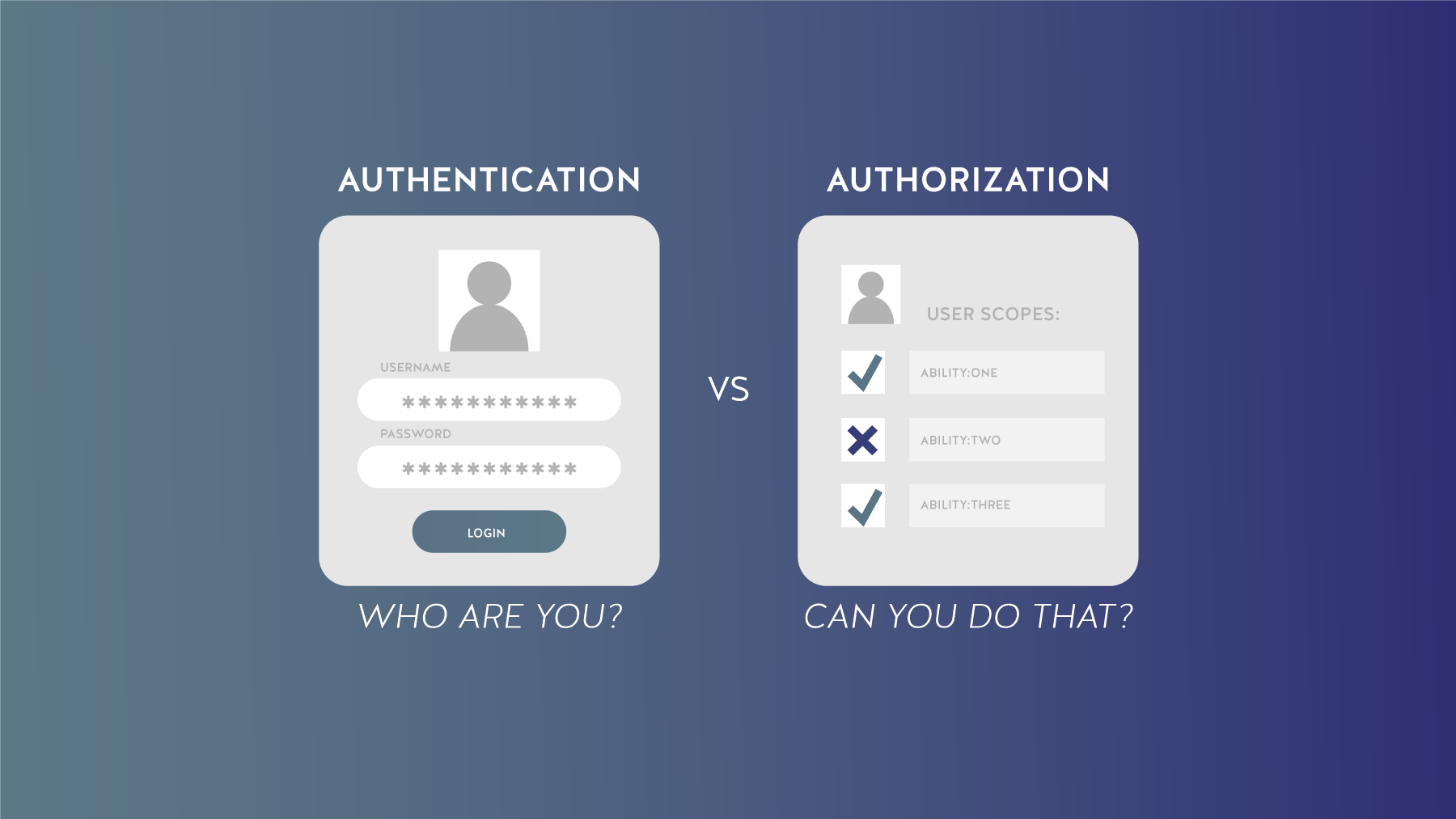Please Explain the Differences Between Identification and Authentication
The identity of a person is assured by authentication. The first step.

The Difference Between Authentication And Identification For Accessing Systems
Up to 5 cash back Identification and authentication are commonly used as a two-step process but they are distinct activities.

. This only needs to occur once per authentication or access process. Authentication is when a system or process verifies identification. Identity verification is the much more in-depth step of linking an individual to the information they provide.
For example entering your user id in a logon form is identification. While in this process users or persons are validated. Authorization is the process of giving permission to access the resources.
As nouns the difference between identification and authentication is that identification is the act of identifying or proving to be the same while authentication is something which validates or confirms the authenticity of something. Access Control Access control is the addition of extra authentication steps to further protect important segments. The difference between identification and authentication is that the former is happening without my explicit cooperation whereas the latter includes me in the process.
Authentication is the process of identifying a user to provide access to a system. Authentication is about validating your credentials like User NameUser ID and password to verify your identity. Its aim is simple to make sure the identity is who they say they are.
In the most basic sense authentication refers to the process of confirming someones identity. It specifies what data youre allowed to. Authentication Authentication is the method of identifying the user.
Identification testing the morfological or chemical identity of a sample based on existing descriptions Authentication verification of the identity of a person or a subject. The Microsoft identity platform uses the OpenID Connect protocol for handling authentication. In authentication process the identity of users are checked for providing the access to the system.
Authentication is the process of proving that you are who you say you are. A standard method for authentication is the validation of credentials such as a username and password. Whatever piece of data was received has been sent as-is by some entity E and was not altered.
The specific entity E is involved and responding. To confirm a persons identity through non-digital means documents such as passports drivers licenses state ID social security cards etc. What tends to happen is that they confuse authentication with identification or authorization.
Its sometimes shortened to AuthN. In authentication process users or persons are verified. The system determines whether you are what you say you are using your credentials.
In an authentication scheme the user promises they are who they say they are by delivering evidence to back up the claim. In this it is verified that if the user is allowed through the defined policies and rules. In contrast the verification process involves ensuring whether or not identity data is associated with a particular individual for example matching an individuals date of birth to an individuals name.
Are used as a part of the authentication process. Authorization is the act of granting an authenticated party permission to do something. In other words the authorization includes the permissions that a person has given.
While in authorization process persons or users authorities are checked for accessing the resources. They are in fact all distinct concepts and should be thought of as such. Identity authentication on the other.
Authentication is the first step of the process. The terminologies are interchangeably used but are distinct. This means that identification is a.
Identification and integrity at the same time E E. Identification is the claiming of an identity. In this authentication.
Identification is nothing more than claiming you are somebody. Authentication is the ability to prove that a user or application is genuinely who that person or what that application claims to be. In this the user or client and server are verified.
For example consider a user who logs on to a system by entering a user ID and password. Your email id is a form of identification and you share this identification with everyone to receive emails. With identity verification a customer is linked directly to that data and.
Authentication that can convince a judge. With identity validation businesses are checking if the data is real. We run into it daily both in digital usernamepassword and analog forms IDpassport.
For example entering your user id in a logon form is identification. Identification is merely asking customers or users to present ID documents to prove who they are. Identification is the ability to identify uniquely a user of a system or an application that is running in the system.
Identification is when someone identifies themselves. Accordingly authentication is one method by which a certain amount of trust can be assumed. Any one of the three common authentication factors can be employed for identification.
Lets go over each and give an example or two. With the help of the users authentication credentials it checks if the user is legitimate or not or if the user has access to the network by checking if the users credentials match with credentials stored in the network database. In public and private networks the system authenticates the user identity via login passwords.
On the other hand authorization checks the access list that the authenticated person has.

Identification Authentication Verification What Are The Differences Idenfy

What Is The Difference Between Authentication And Authorization Nordic Apis

Rfid Vs Nfc Nfc Technology Rfid Nfc
Difference Between Authentication And Authorization Difference Between
Comments
Post a Comment